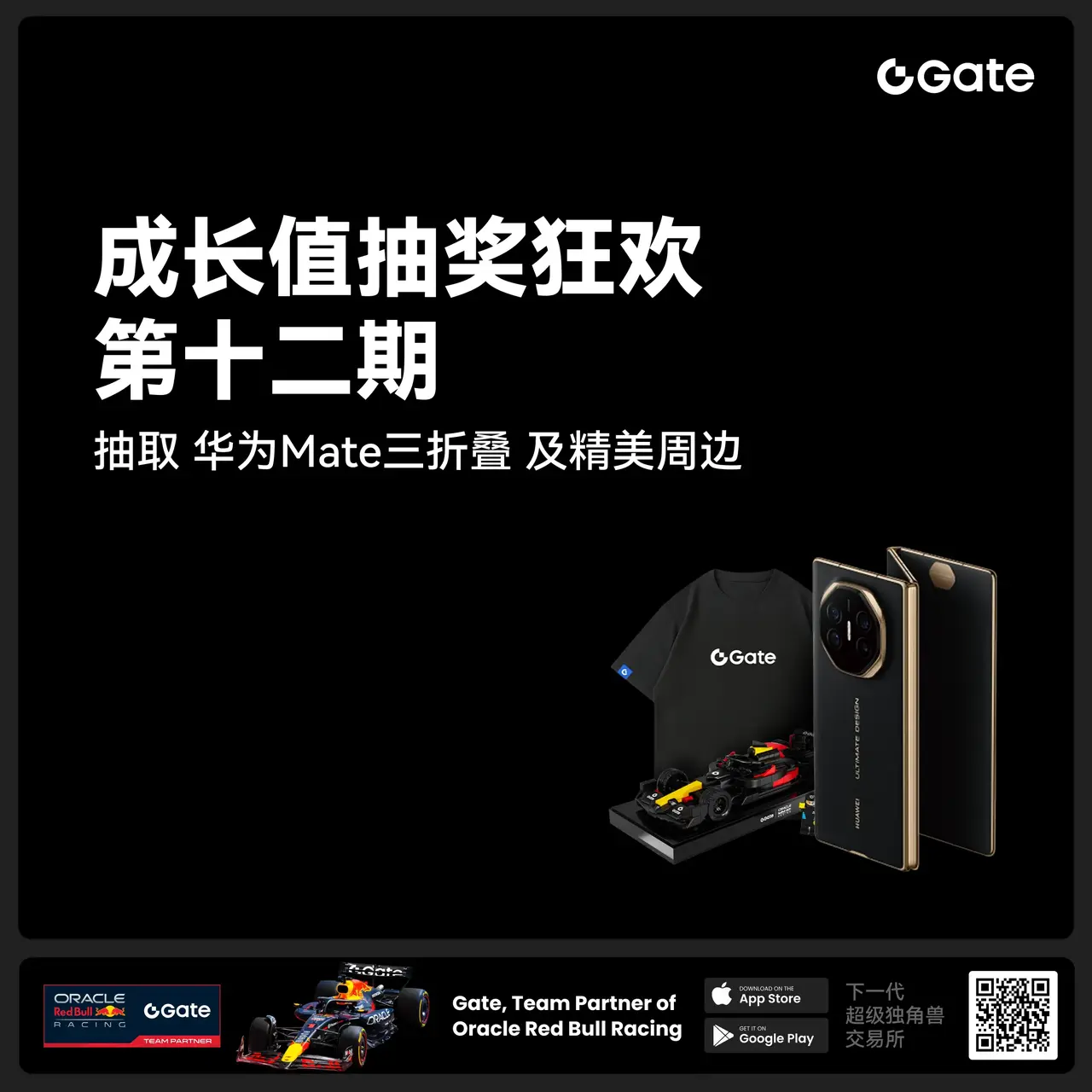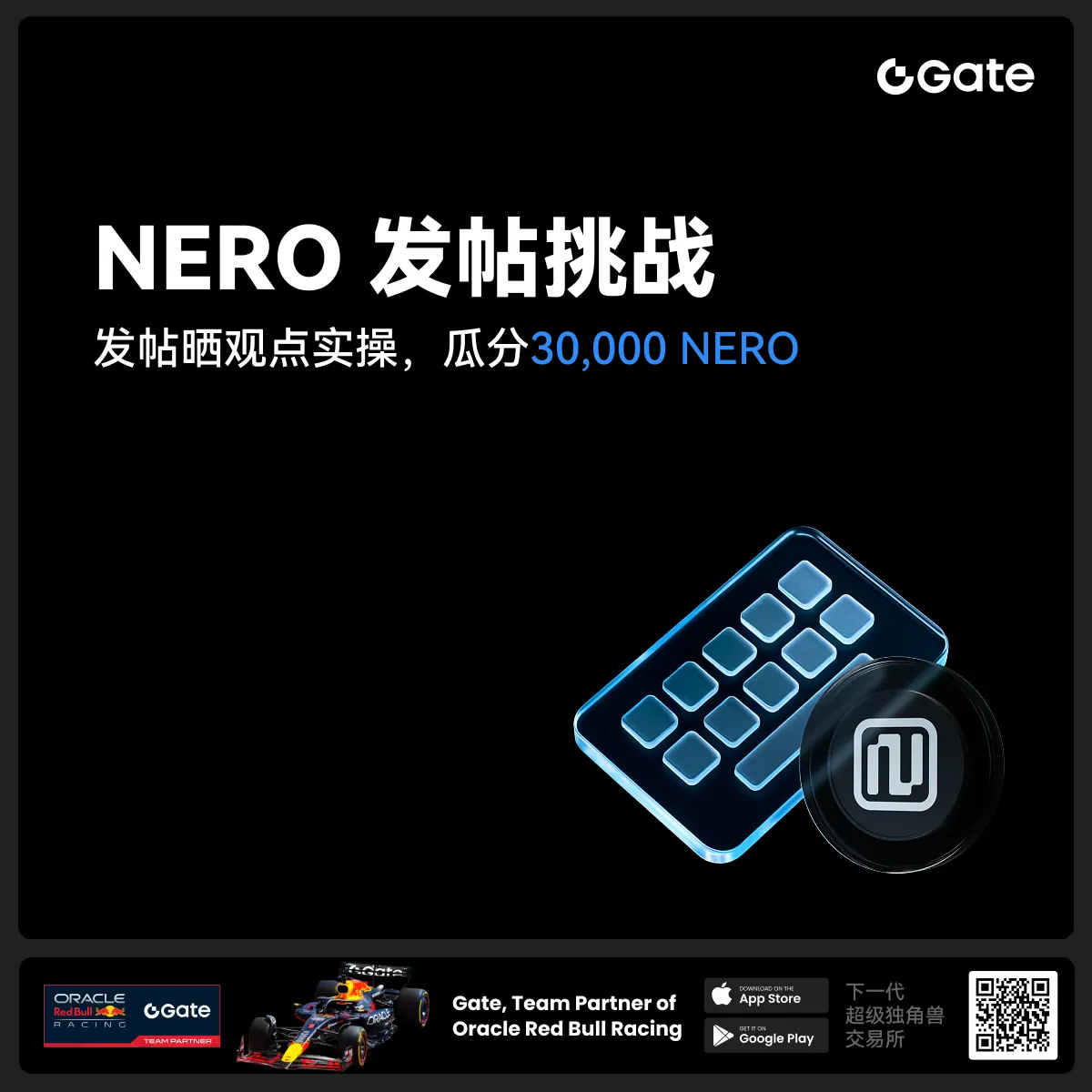- 話題1/3
17k 熱度
145k 熱度
2k 熱度
25k 熱度
92k 熱度
- 置頂
- 🎉 #CandyDrop合约挑战# 正式開啓!參與即可瓜分 6 BTC 豪華獎池!
📢 在 Gate 廣場帶話題發布你的合約體驗
🎁 優質貼文用戶瓜分$500 合約體驗金券,20位名額等你上榜!
📅 活動時間:2025 年 8 月 1 日 15:00 - 8 月 15 日 19:00 (UTC+8)
👉 活動連結:https://www.gate.com/candy-drop/detail/BTC-98
敢合約,敢盈利
- 🎉 攢成長值,抽華爲Mate三折疊!廣場第 1️⃣ 2️⃣ 期夏季成長值抽獎大狂歡開啓!
總獎池超 $10,000+,華爲Mate三折疊手機、F1紅牛賽車模型、Gate限量週邊、熱門代幣等你來抽!
立即抽獎 👉 https://www.gate.com/activities/pointprize?now_period=12
如何快速賺成長值?
1️⃣ 進入【廣場】,點擊頭像旁標識進入【社區中心】
2️⃣ 完成發帖、評論、點讚、發言等日常任務,成長值拿不停
100%有獎,抽到賺到,大獎等你抱走,趕緊試試手氣!
截止於 8月9日 24:00 (UTC+8)
詳情: https://www.gate.com/announcements/article/46384
#成长值抽奖12期开启#
- 📢 Gate廣場 #NERO发帖挑战# 秀觀點贏大獎活動火熱開啓!
Gate NERO生態周來襲!發帖秀出NERO項目洞察和活動實用攻略,瓜分30,000NERO!
💰️ 15位優質發帖用戶 * 2,000枚NERO每人
如何參與:
1️⃣ 調研NERO項目
對NERO的基本面、社區治理、發展目標、代幣經濟模型等方面進行研究,分享你對項目的深度研究。
2️⃣ 參與並分享真實體驗
參與NERO生態周相關活動,並曬出你的參與截圖、收益圖或實用教程。可以是收益展示、簡明易懂的新手攻略、小竅門,也可以是行情點位分析,內容詳實優先。
3️⃣ 鼓勵帶新互動
如果你的帖子吸引到他人參與活動,或者有好友評論“已參與/已交易”,將大幅提升你的獲獎概率!
NERO熱門活動(帖文需附以下活動連結):
NERO Chain (NERO) 生態周:Gate 已上線 NERO 現貨交易,爲回饋平台用戶,HODLer Airdrop、Launchpool、CandyDrop、餘幣寶已上線 NERO,邀您體驗。參與攻略見公告:https://www.gate.com/announcements/article/46284
高質量帖子Tips:
教程越詳細、圖片越直觀、互動量越高,獲獎幾率越大!
市場見解獨到、真實參與經歷、有帶新互動者,評選將優先考慮。
帖子需原創,字數不少於250字,且需獲得至少3條有效互動
- 🎉 親愛的廣場小夥伴們,福利不停,精彩不斷!目前廣場上這些熱門發帖贏獎活動火熱進行中,發帖越多,獎勵越多,快來GET你的專屬好禮吧!🚀
1️⃣ #GateLaunchpad上线IKA# |IKA認購體驗
在Gate廣場帶話題曬出你的IKA Launchpad認購體驗,4位幸運分享者講瓜分$200分享獎池!
詳情 👉️ https://www.gate.com/post/status/12566958
2️⃣ #ETH冲击4800# |行情分析預測
大膽發帖預測ETH走勢,展示你的市場洞察力!10位幸運用戶將平分0.1 ETH 獎勵!
詳情 👉️ https://www.gate.com/post/status/12322403
3️⃣ #创作者活动第二期# |ZKWASM話題
在廣場或推特發布與 ZKWASM 或其交易活動相關的原創內容,瓜分4,000枚ZKWASM!
詳情 👉️ https://www.gate.com/post/status/12525794
4️⃣ #Gate广场征文活动第二期# |ERA話題
談談你對ERA的觀點/體驗,參與並推廣活動,700 ERA大獎等你贏!
詳情 👉️ https://www.gate.com/post/status/12361653
5️⃣ #MBG任务挑战# |MBG話題
分享你對MBG的洞察,積極參與和推廣MBG活動,20位小
Is IOTA Now Fully Decentralized with the Stardust Upgrade? An In-Depth Look at Coordicide and the Bright Future
On Tuesday, September 12, the IOTA protocol made major headlines after it unveiled the plans to upgrade the IOTA mainnet. The announcement involves the degradation of the IOTA mainnet Coordinator to a decentralized permission Validator Committee.
The Committee comprises multiple validators running on different host providers and locations. In addition to increasing network uptime and stability, it also provides censorship resistance by allowing external entities to be part of the Validator Committee.
Blockchain researcher Collin Brown said that the Stardust upgrade brings a major shift with the Coordinator transformed into the Validator Committee.
The forthcoming upgrade, known as Stardust, will introduce several fundamental alterations to the IOTA network. This includes the replacement of the Coordinator with the Validator Committee. To ensure the smooth deployment and operation of the Validator Committee, the IOTA protocol has already implemented and tested the new protocol on the ShimmerNet. It’s important to emphasize that the mainnet, is not the permanent home for the Validator Committee, as its true purpose aligns with Coordicide.
Addressing the challenges With IOTA Coordinator
The current Coordinator functions as an arbiter within the IOTA network, responsible for validating transactions in periodic batches. This is achieved by issuing milestones that nodes accept as confirmation for the transactions they’ve verified. While this approach enhances security, it also means that the Coordinator has the potential to hinder transactions if milestones are set in specific ways. Furthermore, if the Coordinator becomes inaccessible, the accepted confirmation of transactions is lost, causing the network to halt processing value transactions until the Coordinator resumes its functions.
To address these challenges, we are implementing an upgrade, transitioning from the current Coordinator to a decentralized Validator Committee. This change eliminates the reliance on a single Coordinator managed by the IOTA Foundation for milestone placement. Instead, multiple validators collaborate as a committee, employing an off-chain Byzantine Fault Tolerant (BFT) consensus mechanism to determine the placement of the next milestone. Each validator proposes the parents to be referenced in the milestone, explains IOTA in its blog post.
This upgrade offers several advantages. It ensures censorship resistance, as no single entity or machine is solely responsible for validating transactions in the network. Additionally, it enhances network uptime, as the committee can continue producing milestones even if a few validators experience downtime due to factors like network outages or misbehavior.
New Opportunities for IOTA
IOTA is still not receiving full appreciation for its role as its core smart contract network, ShimmerNet, remains under heavy construction. However, there is evidence that IOTA is taking proactive steps to enhance its market share in a Web3.0 eco, currently dominated by the likes of Ethereum (ETH), Solana (SOL), BNB Chain, and Cardano (ADA), among others.
The opportunities present in the IOTA network at this time have contributed to sustaining its price, which stands at $0.1628. This reflects a mild surge of 0.50% at the time of writing.